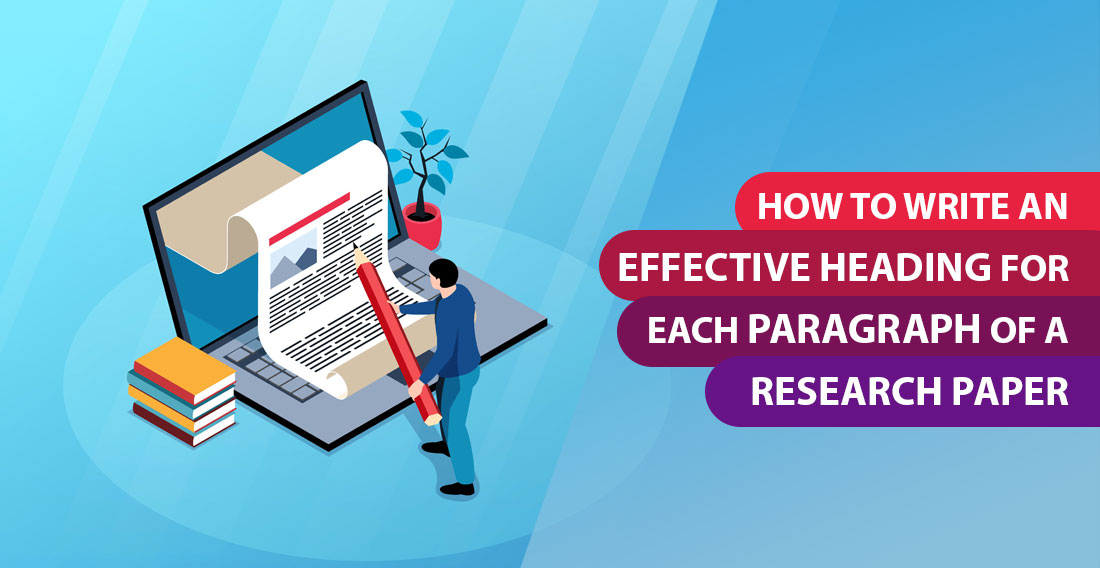How to write an effective heading for each paragraph of a research paper?
In academic writing, the primary objective when writing comprises of putting ideas, findings or case in writing in the right format. There is no doubt that the issue with the effectiveness of headings is one of the components that make the essential contribution to this clarity. Headings, which are informative and thought out, do more than just help people navigate through the material; they also help people who are reading the paper to engage with it. Believe it or not, there are some rules even for proper numbering of the paragraphs and writing perfect headings for each paragraph of a research paper.
Purpose of Research Paper Headings
Now that we know the basic structure of a research paper, let us learn the purpose of headings. The main focus and subtopics are reference points that should be in a research paper to assist users in the paper navigation.
- Help to structure a paper by pointing out the different topics, format and style that will be used.
- Emphasize on points and concepts whereby the presentation entails a luminous and clear distinction of individual notions.
- Improve readability and flow.
- Make it as easy as possible for readers to be able to find exactly what they are looking for.
- In particular, each of the headings should contain short descriptions of the materials presented in the respective paragraph or section.
Structure of Research Paper
It is necessary to review the structure of the research paper in advance of developing the headings. Typically, it includes:
- Introduction: In this research, the research question and objectives of the study are articulated.
- Literature Review: Summarizes existing studies.
- Methodology: It describes the research methods that were applied for the research study.
- Results: Shares findings.
- Discussion: Interprets results.
- Conclusion: Points out the conclusion and discusses the relevance of the findings.
However, keep all the headings short and meaningful.
Ideal headings should be short and able to pass the meaning across clearly. They must contain information by which the reader would grasp the topic of the given paragraph and no more.
Use Parallel Structure
There should be uniformity in the format and structure normally. Consistency in the choice of headings helps in easing the shift between the various headers all through the paper. For example:
- Factors Influencing Behavior
- Methods of Data Collection
- Analysis of Results
- It makes everything professional and sets the same theme throughout, which makes it easier to follow.
Mirror the Paragraph’s Content
Every heading should correspond to the given paragraph properly. Never use headings/mood titles such as Introduction/ Discussion/Conclusion…etc if not the main heading of your section. However, the heading options should be relevant and in a way that relate to what is in the content.
Utilize Keywords
It is important to also let the headings contain important keywords related to your topic. Not only does it help enhance the scientific quality of your paper but also enhance its visibility to search engines and databases.
Substituting Top Level Heading to the Appropriate Heading Level
Most of the academic papers need elaboration in form of subheadings subordinate to the major ones. Use heading levels to indicate the importance and relationship between sections:
- Main Heading (H1): These include sections such as Introduction and Methodology are among the significant sections.
- Subheading (H2): These are basic subsections grouped under major headings Subsection A Subsection B Subsection C
- Sub-subheading (H3): Segmentation within sub-sectors to the extent that allows for accurate price determination.
Clarity and simplicity suits us best
Do not use any technical word or phrase, any acronym or abbreviation or any vague term in the heading of the report. No matter how technical the content of the paragraph under discussion is, the heading chosen should be clear and comprehensible for a broad audience.
Revise and Optimize
When you are done with the creation of the headings, scroll through the piece to check for consistency, usefulness and correctness. Ensure they:
- Should correlate with the paper’s goals.
- Translate perfectly from one to another.
- Avoid redundancy.
Writing effective headings for each paragraph of a research paper requires careful planning and attention to detail. By keeping headings concise, descriptive, and aligned with the paper’s content and structure, you enhance the readability and professionalism of your work. Remember to review, revise, and seek feedback to ensure your headings effectively guide readers through your research narrative.
If you’re looking for a trusted, and accurate Research Paper Writing Services, Writing Tree is here to help.
Contact Information: Writing Tree
📞 Contact Number: 06264689448
Start your journey to academic excellence today with Writing Tree.
Conclusion
Get someone else to review them before you finalize your paper as you may find it hard to notice discrepancies in the created headings. The current observer might not notice issues with the current content and without fresh eyes, assign potential heading-error areas.






